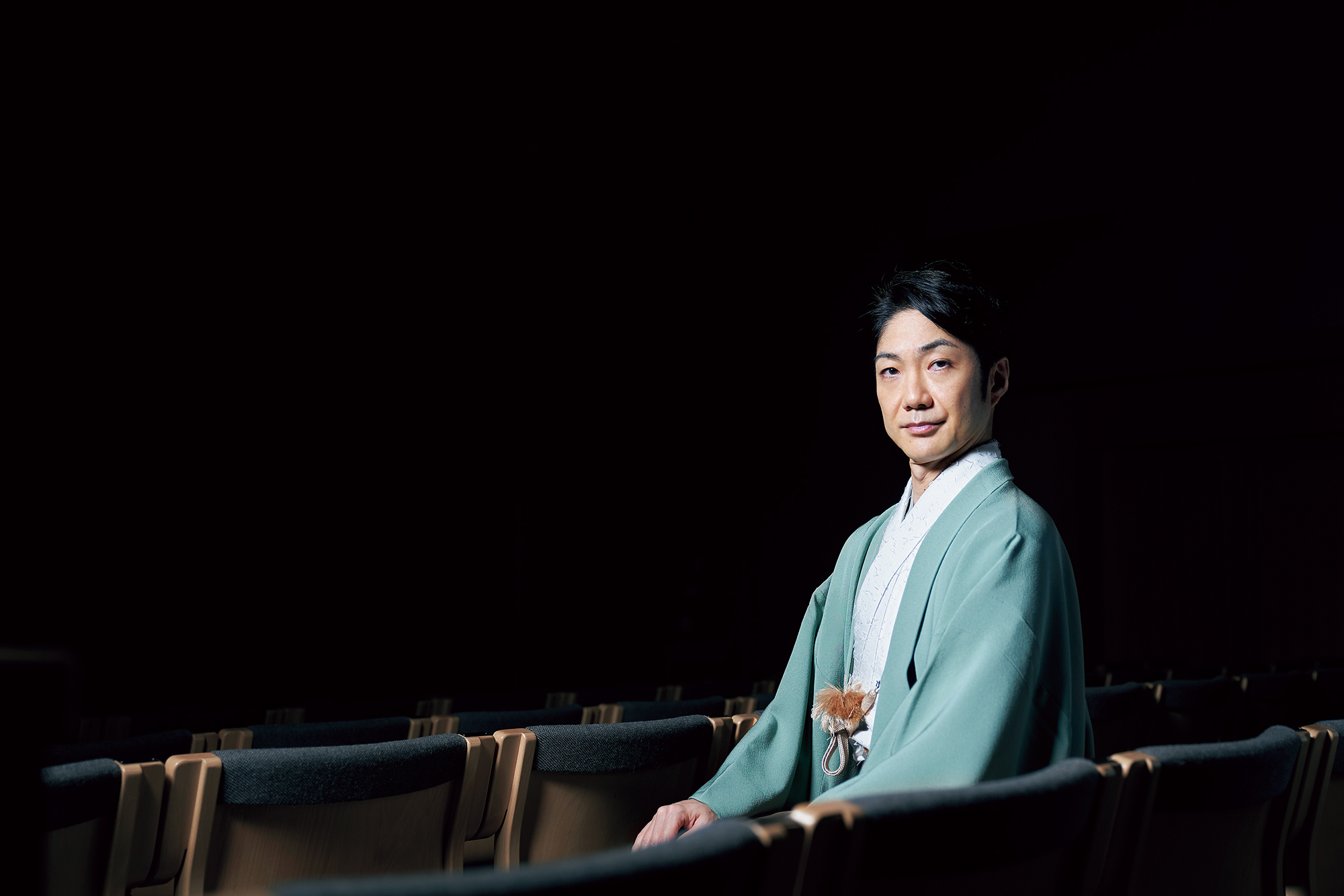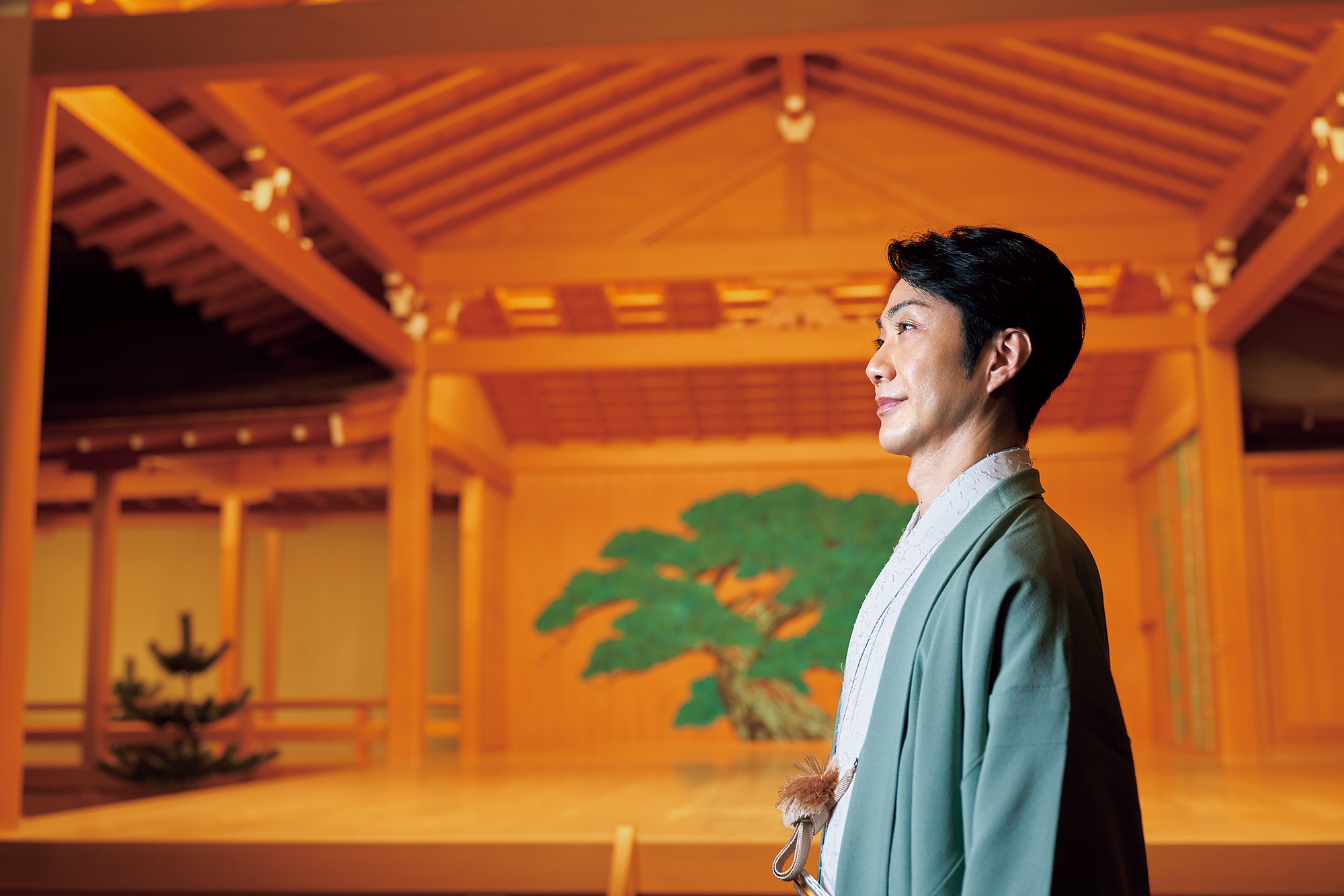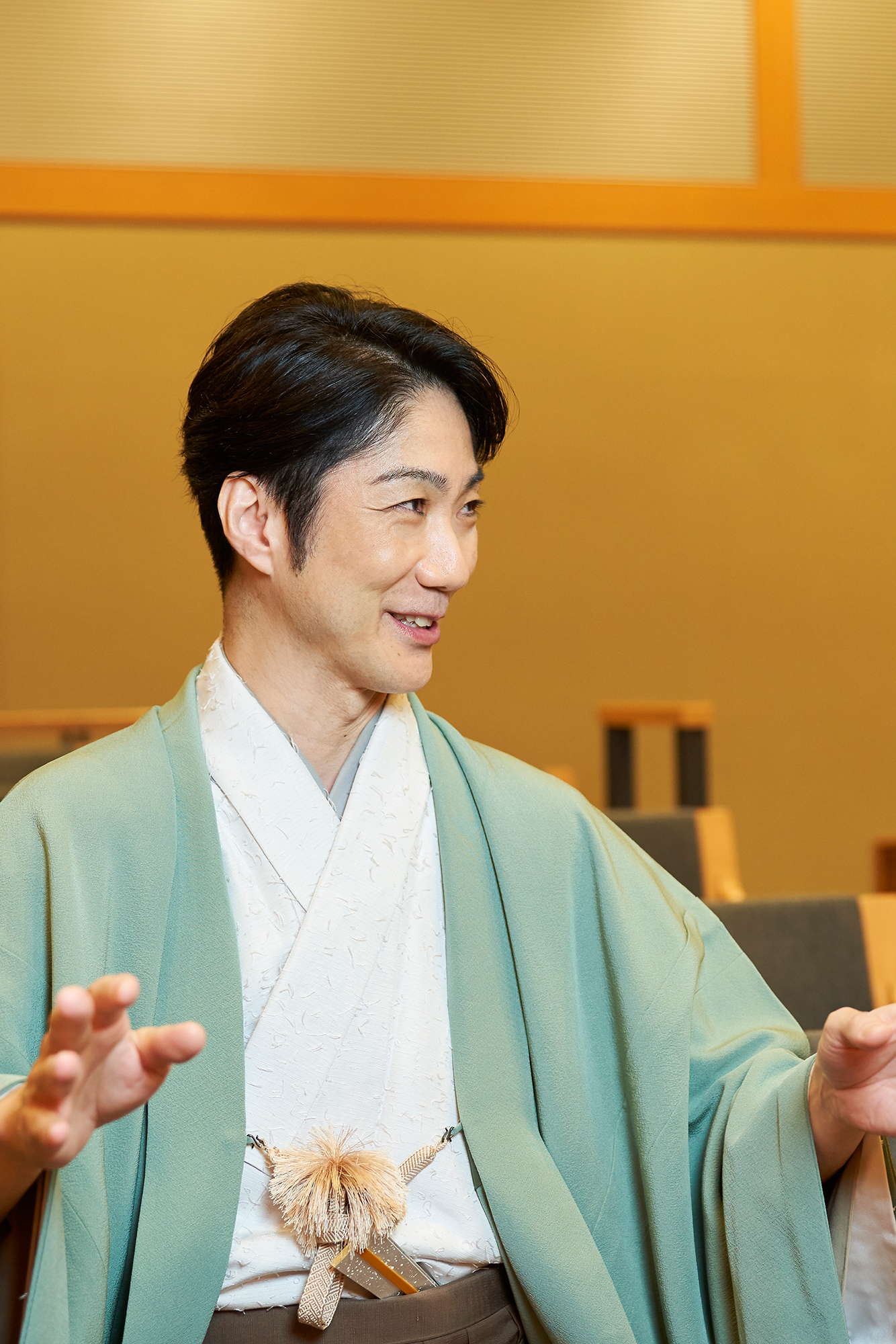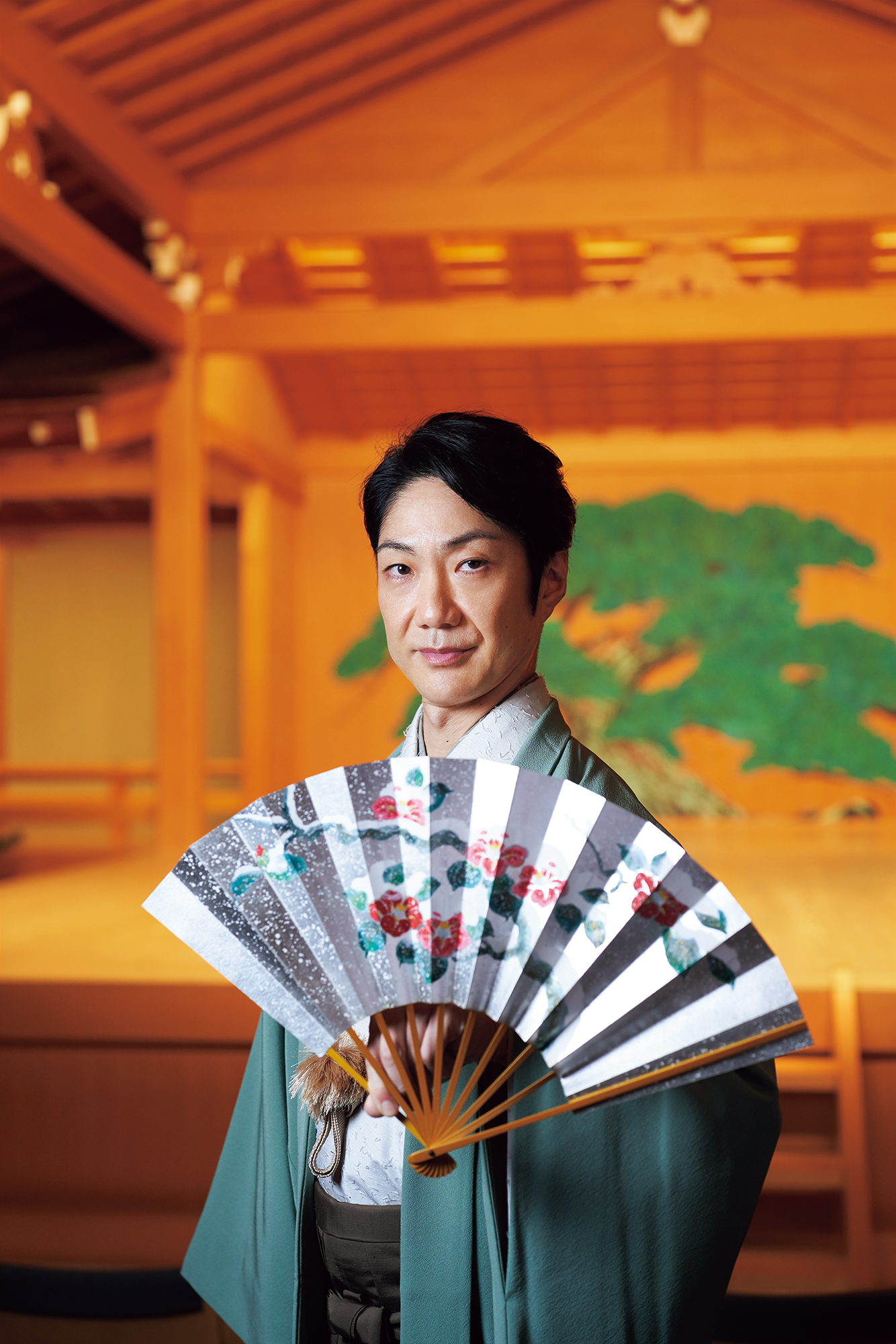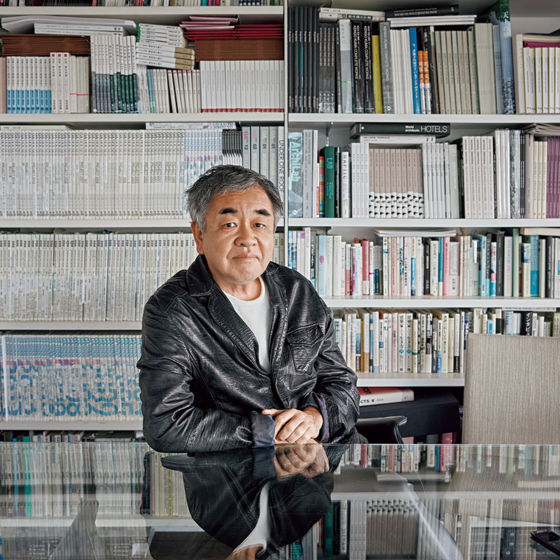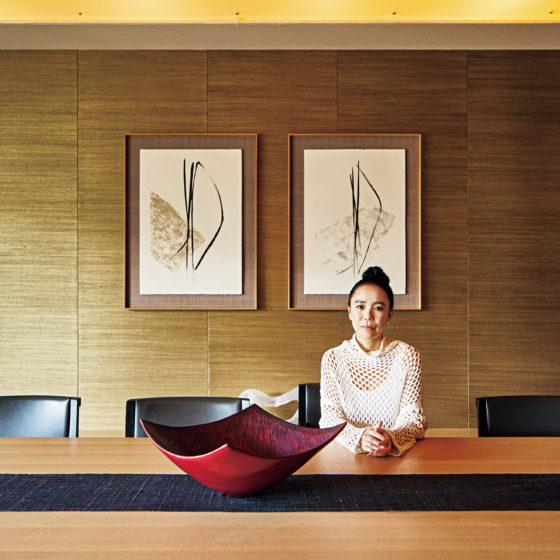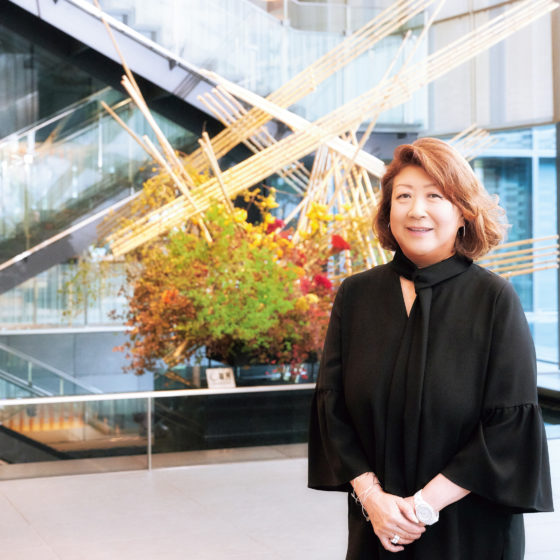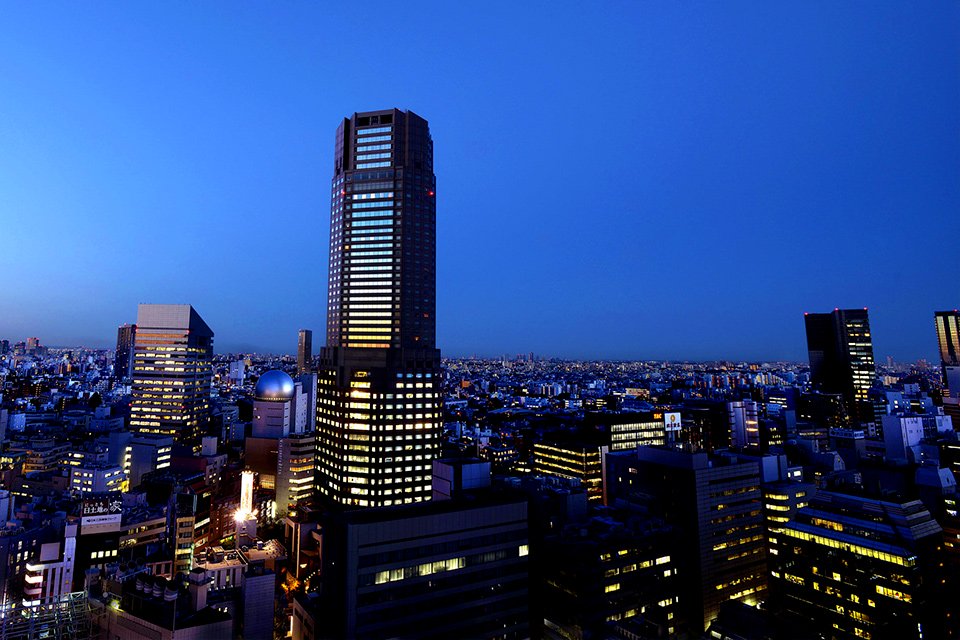- “Even during this growing epidemic, we Kyōgen performers are not shocked by each twist and turn. I understand that people are agitated when they are no longer able to go to the office or leave their homes, but a Noh actor understands that the night-time outdoor plays are cancelled when there’s a typhoon. Based on this, we have created what in Kyōgen is called the culture of once-in-a-life-events.”
- In the awe-inspiring presence of the Noh comedian Mansai Nomura, Nomura started calmly speaking without any prompting. Kyōgen and epidemics: in the 700-year history of the art form, there have no doubt been many such trials.
- “Around the time when our ancestors started Kyōgen, the city of Kyoto had been laid to waste in the Ōnin War. After that, there were also major natural disasters and numerous epidemics. There was political upheaval and the end of the shogunate system. With the Meiji Restoration, retainers from the Kaga clan (Kaga, today’s Ishikawa Prefecture), which was the wealthiest clan in Japan and greatly supported the arts, were suddenly set free. This meant no longer receiving their salaries and that was when the first Mansai, my great-grandfather, came to Tokyo despite having no home, no stage, and few acquaintances. Even more, in World War II, all of the costumes and sets were burned in the attacks.
- So, considering this history, there have been many episodes where it would not have been surprising if the art form had collapsed, yet culture refuses to die. As long as there are performers, there will be people who come to watch. That is the nature of cultural art forms. Which is why, even during this epidemic, I am living through these conditions with confidence that performing arts will truly be all right as long as our species continues to survive.”
- He started the interview with these powerful words. Today’s shooting, however, took place on a Noh stage inside the hotel. It must feel different from the stages of different genres.
- “The Noh stage is like my home field. For me, the Noh stage is where I really come alive. It feels like a world where I have models to follow.
- When I cross over to movies and plays, there are many people I’m working with for the first time and so I start by making new models. Then, after experiencing those models, I come back to my home field. At that time, I think about the nature of Kyōgen. As a matter of etiquette, I try not to bring models of contemporary acting into the world of Kyōgen, but it does enhance our performance to have that emotion-driven experience, because Kyōgen itself is performed with kata (forms or fixed movement patterns). It’s not the case that theatrical experience is never reflected in Kyōgen.
- Incidentally, it is unusual to have a Noh stage in a hotel. Noh stages normally belong to a particular school, but this one and the National Noh Theatre do not have that type of affiliation. Furthermore, this hotel is private. While the National Noh Theatre seats nearly 600, this facility seats about 200 and is more like a live music venue. The intimate distance really conveys the performance’s energy to the audience.
- I am grateful that they let me perform Sanbaso 20 years ago when they opened, and, just before New Year’s every year thereafter, have let me come back to present the Mansai-no Kai. It is like the wrap-up of the year for me each year and after the Kyōgen performance, we also have discussion time with fans. Typical shows have a lot of female attendees, but here there are many men as well, so it is a nice change of pace.”
- A new challenge for Mansai in 2020 has been video broadcasts of Kyōgen performances. Mansai explained what he discovered in this new mode.
- “Assuming that the best way to view Kyōgen is live, with a video broadcast commentary can be inserted and viewers can view scenes multiple times, helping them understand it better. It lets them reacquaint themselves with the art form of Kyōgen. We Noh comedians can also offer close-up views of fine details. The greatest advantage is that we can review which aspects of the show delighted the audience most.
- In other words, we can dissect the performance and reconstruct it. This is a crucial element for preserving the classics, which are based on tradition. The work will not be a re-creation if it is merely handed down and not dissected. That would only make it a replication. It is always necessary to dissect and reconstruct a play so that we can make it a re-creation and a re-presentation. I am proud to say that I have done just that, including the times when I made the forays I mentioned into other genres. Dissecting and reconstructing Kyōgen, I think I could say that that is my life’s work.”
- Even under these circumstances, we have to feel out a new style of Kyōgen. What is the secret to doing this with a graceful smile?
- “It’s said that many Noh comedians live long lives. I think the reason for that is that we are always using our diaphragm to act out exaggerated laughter on stage. Laughing really stimulates the immune system. Laughter truly gives off life. Furthermore, the laughter that we display is a kata. If there is something that I do not think is funny, I actually start to think that it is funny if I perform a laughing kata. I have heard that volleyball players will grin in order to help brush off the pain of an arduous training exercise. Smiling is like lying to your body. Performing laughing kata relaxes you mentally. This may also be the same with crying—if we vent emotions, it calms our minds.
- When you think of it, performers are programmed with kata from the age of three. We study the reactions it creates in people when we act out the programming we have learned. This is why Kyōgen actors have certain aspects much like digital robots. However, if audience reactions diverge from our input data, Programming updates are exactly like Kyōgen kata.
- So, what I want to say to everyone is, when you feel blocked and you have nothing to laugh about, just try to laugh as we do when performing kata. This will naturally make you smile. Use a laughter kata and your spirit will automatically lighten.
- In these trying times, this is what I have rediscovered, and I have updated my data. In other words, the outcome has been a new style of Kyōgen for this era. This is how we have survived as a performing art for 700 years.
- This is the origin of my message that, ‘As long as our species continues to survive, there will be culture and art. We are waiting for the springtime that brings the return of our stagecraft that shares the spirit of life between viewer and performer.’”



